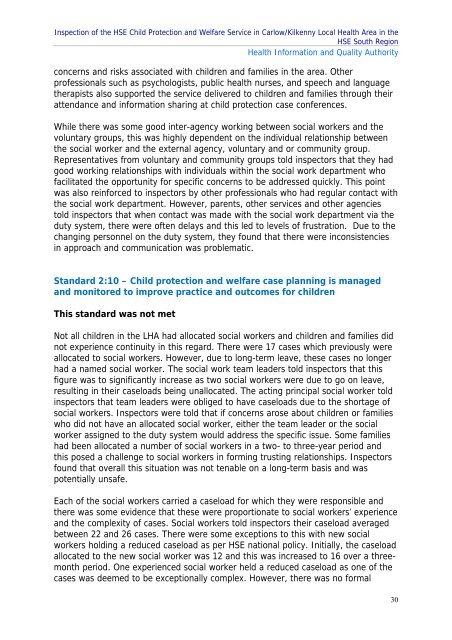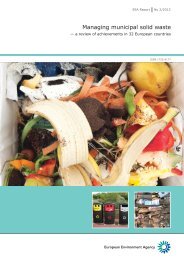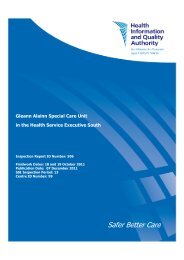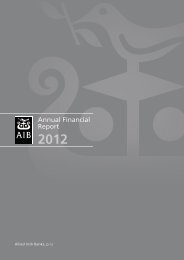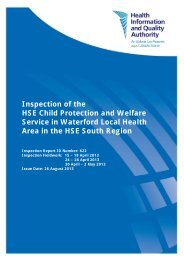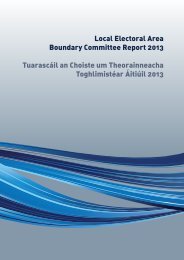HSE Child Protection and Welfare Service in Carlow/Kilkenny - hiqa.ie
HSE Child Protection and Welfare Service in Carlow/Kilkenny - hiqa.ie
HSE Child Protection and Welfare Service in Carlow/Kilkenny - hiqa.ie
Create successful ePaper yourself
Turn your PDF publications into a flip-book with our unique Google optimized e-Paper software.
Inspection of the <strong>HSE</strong> <strong>Child</strong> <strong>Protection</strong> <strong>and</strong> <strong>Welfare</strong> <strong>Service</strong> <strong>in</strong> <strong>Carlow</strong>/<strong>Kilkenny</strong> Local Health Area <strong>in</strong> the<strong>HSE</strong> South RegionHealth Information <strong>and</strong> Quality Authorityconcerns <strong>and</strong> risks associated with children <strong>and</strong> famil<strong>ie</strong>s <strong>in</strong> the area. Otherprofessionals such as psychologists, public health nurses, <strong>and</strong> speech <strong>and</strong> languagetherapists also supported the service delivered to children <strong>and</strong> famil<strong>ie</strong>s through theirattendance <strong>and</strong> <strong>in</strong>formation shar<strong>in</strong>g at child protection case conferences.While there was some good <strong>in</strong>ter-agency work<strong>in</strong>g between social workers <strong>and</strong> thevoluntary groups, this was highly dependent on the <strong>in</strong>dividual relationship betweenthe social worker <strong>and</strong> the external agency, voluntary <strong>and</strong> or community group.Representatives from voluntary <strong>and</strong> community groups told <strong>in</strong>spectors that they hadgood work<strong>in</strong>g relationships with <strong>in</strong>dividuals with<strong>in</strong> the social work department whofacilitated the opportunity for specific concerns to be addressed quickly. This po<strong>in</strong>twas also re<strong>in</strong>forced to <strong>in</strong>spectors by other professionals who had regular contact withthe social work department. However, parents, other services <strong>and</strong> other agenc<strong>ie</strong>stold <strong>in</strong>spectors that when contact was made with the social work department via theduty system, there were often delays <strong>and</strong> this led to levels of frustration. Due to thechang<strong>in</strong>g personnel on the duty system, they found that there were <strong>in</strong>consistenc<strong>ie</strong>s<strong>in</strong> approach <strong>and</strong> communication was problematic.St<strong>and</strong>ard 2:10 – <strong>Child</strong> protection <strong>and</strong> welfare case plann<strong>in</strong>g is managed<strong>and</strong> monitored to improve practice <strong>and</strong> outcomes for childrenThis st<strong>and</strong>ard was not metNot all children <strong>in</strong> the LHA had allocated social workers <strong>and</strong> children <strong>and</strong> famil<strong>ie</strong>s didnot exper<strong>ie</strong>nce cont<strong>in</strong>uity <strong>in</strong> this regard. There were 17 cases which previously wereallocated to social workers. However, due to long-term leave, these cases no longerhad a named social worker. The social work team leaders told <strong>in</strong>spectors that thisfigure was to significantly <strong>in</strong>crease as two social workers were due to go on leave,result<strong>in</strong>g <strong>in</strong> their caseloads be<strong>in</strong>g unallocated. The act<strong>in</strong>g pr<strong>in</strong>cipal social worker told<strong>in</strong>spectors that team leaders were obliged to have caseloads due to the shortage ofsocial workers. Inspectors were told that if concerns arose about children or famil<strong>ie</strong>swho did not have an allocated social worker, either the team leader or the socialworker assigned to the duty system would address the specific issue. Some famil<strong>ie</strong>shad been allocated a number of social workers <strong>in</strong> a two- to three-year period <strong>and</strong>this posed a challenge to social workers <strong>in</strong> form<strong>in</strong>g trust<strong>in</strong>g relationships. Inspectorsfound that overall this situation was not tenable on a long-term basis <strong>and</strong> waspotentially unsafe.Each of the social workers carr<strong>ie</strong>d a caseload for which they were responsible <strong>and</strong>there was some evidence that these were proportionate to social workers’ exper<strong>ie</strong>nce<strong>and</strong> the complexity of cases. Social workers told <strong>in</strong>spectors their caseload averagedbetween 22 <strong>and</strong> 26 cases. There were some exceptions to this with new socialworkers hold<strong>in</strong>g a reduced caseload as per <strong>HSE</strong> national policy. Initially, the caseloadallocated to the new social worker was 12 <strong>and</strong> this was <strong>in</strong>creased to 16 over a threemonthperiod. One exper<strong>ie</strong>nced social worker held a reduced caseload as one of thecases was deemed to be exceptionally complex. However, there was no formal30


